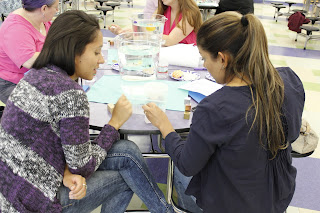But the students aren't the only ones learning and having fun. Our teachers are learning too. In early childhood, teachers often work all year - either in summer programs, or in childcare programs that provided care for working families year round. And, teachers take the time to further their own learning during the summer.
This spring and summer, SPS offered a small catalogue of workshops open to early childhood educators from across the city. In any given workshop, Head Start, family childcare, center-based program, and Somerville Public School teachers learn side by side. Offerings from May-August include:
- Spring Into Science - Worms and Insects
- Using Personal Dolls to Promote Anti-Bias Education
- Music for Transitions - Self Regulation and Play
- Using Photographs with Children and Families: Making Learning in Your Classroom Visible
- Summer Science Academy: Explorations with Water
- The Art of Loose Parts in the Classroom: The Beautiful Stuff Project
- Understanding Trauma: Getting your Students Back on Track for Learning
- Preparing Early Childhood Classrooms for Learning: Creating Beautiful Environments
Mary Rizzuto, science educator, spent two days making teachers feel like scientists themselves. Teachers engaged in experiments related to properties of water such as surface tension, bouancy, absorption, and cohesion. All of these apply to work children can do in the classroom in sensory tables and in more intentionally designed experiences.
 |
Mary Rizzuto gives the next directions
for a sink and float activity.
|
 |
| Teachers make predictions about which objects will float and which will sink. |
The busy lives of teachers and competing demands make it hard. Once teachers go back into their classrooms, it can be difficult to make room for new practices. What makes a difference?
Teachers find that making a commitment can help. This means accountability to a group in the form of written plans, new habits, materials. Sharing even one small new way of working can help instill a new practice and inspire others to do the same. We included content on planning and follow up in our professional development workshops to help teachers stay on track with new learning. Padlets, DropBox, follow up emails all encourage teachers to share their work with each other and we hope to post some of those new practices here in the coming months!




No comments:
Post a Comment